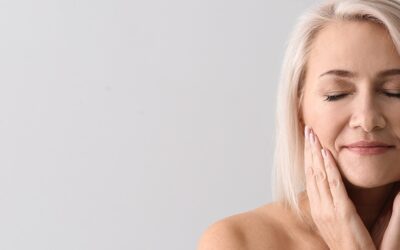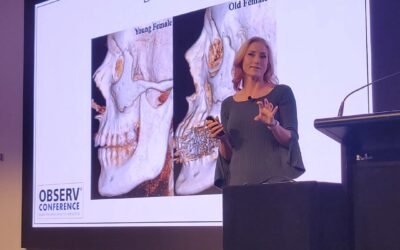No doubt you have all heard about collagen and the unfortunate news that we have less of it as we age.
Why is this? Because existing collagen is broken down significantly by UV, which also inhibits its ability to produce more, and chronological ageing dictates that we lose collagen production each year. So, let’s have a closer look at what that means and how we can slow down its decline.
Collagen is a protein which forms the mattress and support in the skin. Its decline, leads to wrinkles and sagging. The fibroblast cell is responsible for the production and maintenance of collagen. As we age the fibroblast cell diminishes along with a reduction in growth factor messaging, gradually reducing by 1% every year in adult life. The quality of collagen also changes from well-organised bundles of fibers to fragmented disorganised fibers in older skin. This fragmented collagen is less able to maintain hydration levels.
The epidermis is fed by the dermis through producing columns that have a blood and nerve supply, bringing nutrients and oxygen to the epidermis. These interlocking protrusions start to flatten – with degradation of collagen – leading to a diminished blood and nutrient supply.
In addition to the actual collagen being broken down by UV, so is Vitamin C – which is very much a part of this complex process. This is used by the body as a catalyst in the complex chain of messaging to produce collagen. Vitamin C also protects against something called ROS (reactive oxygen species) a free radical produced through inflammation creating destruction or DNA damage in the skin. Although we often may acquire enough Vitamin C in our diet to protect most organs, the sun-exposed skin cannot maintain healthy levels, leaving it vulnerable to further damage and degradation.
There are many types of collagen in the body, but types I and III are predominantly found in the skin. Type III collagen is produced when a normal wound occurs, allowing it to ‘knit’ together. This type of collagen tends to be more rigid, scar-like collagen. Type I collagen is a well-organised form, also found in utero. Ablative therapies (or minimally invasive procedures such as some laser and Fraxel technology) form type III collagen, this being less well organised, rigid fibers. Often this can create a negative, plastic-looking and shiny look to the skin. A way to produce the desired Type I Collagen is ‘Needling’ or collagen induction therapy (CIT). Needling is also the only skin rejuvenation treatment that also stimulates elastin, an important support for collagen.

Using the SkinPen, one of my favourite needling treatments.
Other crucial interventions are topical application of essential nutrients A, C and E; vitamin A and C also stimulates the fibroblast to induce collagen and stimulates the keratinocyte (skin cell) to maintain healthy skin cell turn over. Vitamin A, C and E also helps protect the skin from UV and the subsequent breakdown of nutrients and collagen.
If you are unsure if you are using the correct topical vitamin, which one to use when, or want to investigate dermal needling further; book in for an Initial Skin Consultation with one of our Medical Skin Therapists and start your journey to healthy, beautiful skin today!
From your Skin Team Leader,
Lauren





